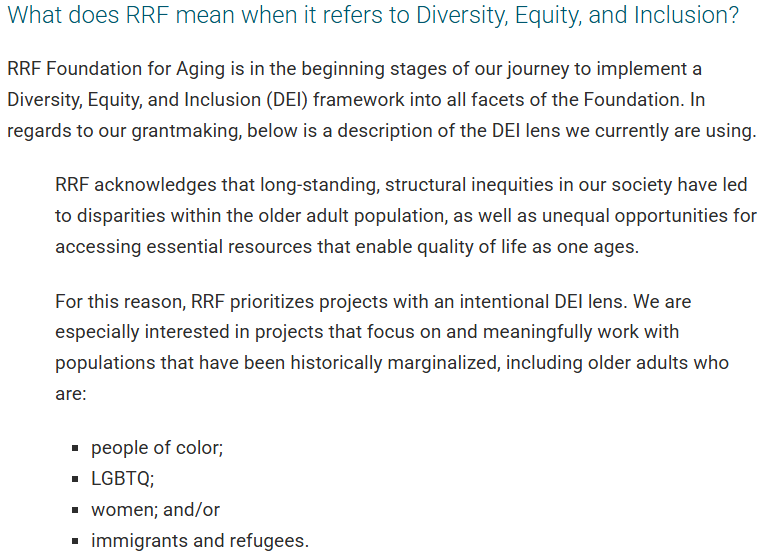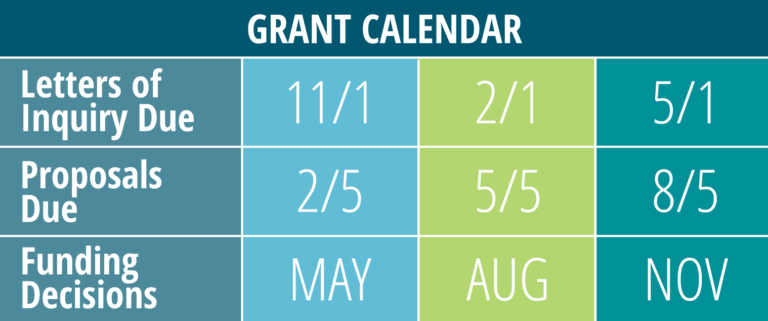FAQ’s
Who can apply for a grant from RRF Foundation for Aging?
RRF provides funding to nonprofit organizations that are tax exempt under Section 501(c)(3) of the Internal Revenue Code as Public Charities; OR nonprofit organizations that are not required to have a 501(c)(3) designation, such as state-funded universities and Area Agencies on Aging.
RRF does not award grants to governmental agencies, except for state universities, area agencies on aging, and programs of the Veterans Administration.
For more information, please review RRF’s Eligibility Guidelines and General Grant Exclusions
Our organization’s 501(c)(3) status is currently pending. Can we apply to RRF?
Organizations whose 501(c)(3) status is pending may apply for a grant from RRF through a fiscal agent that is also a nonprofit organization. Include a copy of the written agreement between the applicant and the organization serving as the fiscal agent, as well as the fiscal agent’s 501(c)(3) letter and other documentation, as requested.
Do I have to complete a Letter of Inquiry (LOI)?
Beginning in Spring 2021, submitting a Letter of Inquiry will be required as a prerequisite for consideration of funding.
How many proposals or Letters of Inquiry may I submit?
Organizations may submit only one Letter of Inquiry and corresponding proposal per grant cycle. Common exceptions include proposals submitted by separate departments of large universities.
Is there a minimum or maximum amount I can apply for?
Applicants are encouraged to develop realistic budgets that include all expenses needed to effectively implement their projects. Applicants can review RRF’s Past Grants to review the grant awards RRF has made over the past five years.
How does RRF calculate Indirect Costs?
10% of the direct expenses requested from RRF can be allocated to indirect expenses. When developing project budgets, RRF encourages organizations to consider the “true cost” of the proposed project and include all relevant expenses.
How long does the review process take?
Invite decisions are made approximately six weeks after a Letter of Inquiry due date. Funding decisions are made approximately three months after an application due date. Letters will be sent notifying applicants of the dispositions of their proposals. Refer to RRF’s Grants Schedule to review the timeline for each application cycle.
When will grant funds be available?
Depending on your project’s timeline and start date, funds are generally released two months after a grant is approved. Refer to RRF’s Grants Schedule to review the timeline for each application cycle.
If our project is not invited or funded, when can we reapply?
If a Letter of Inquiry proposal is not invited or a project is not funded, applicants must wait a year to re-submit a proposal for the same project. However, an organization is allowed to submit a proposal for a different project at any point.
The person who submitted our grant documents is no longer with our organization. How can I gain access to their online account?
To gain access to past grant applications and other documents in your grants portal, please send an email or call RRF’s Grants Manager at 773-714-8080.

Things to Know

Learn about general grant exclusions, search our FAQs, watch an instructional video on our application process, read evaluation guidelines and learn how to develop SMART objectives.


